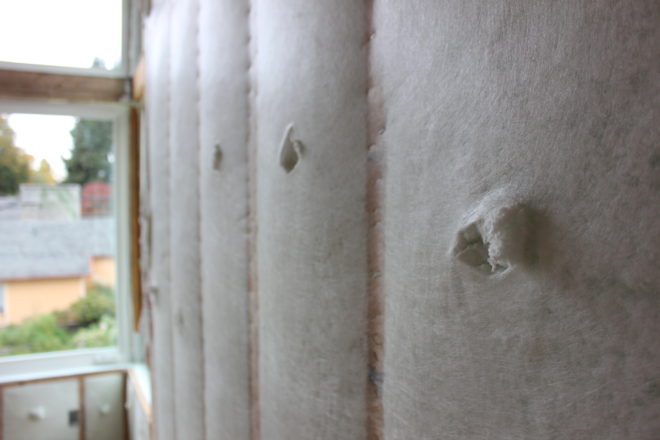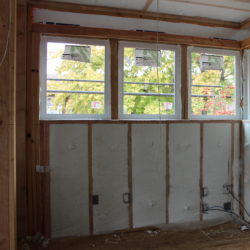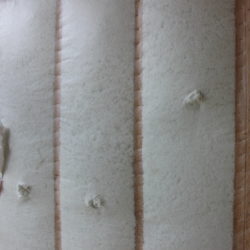
Behind the Walls: Blown-in Insulation
At Everett Custom Homes, we take great efforts to build beyond high-performance standards. By combining superior materials with modern technology, we believe we can make your lives a little more comfortable, and a lot more economical.
Quality insulation is a crucial component of a high-performance home. As we know, to insulate means to surround something with substance in order to stop air or sound from passing through. Consider an insulated water bottle or coffee mug: the contents remain much colder (or warmer) for extended periods of time because the material prevents outside temperatures from affecting what’s inside. The same principle applies to insulating our homes: protecting the interior energy from seeping outdoors, while preventing exterior temperatures from entering. However, not all insulation methods are equal.
Traditional insulation involves piling pre-cut fiberglass batts between the studs before sheetrocking. While this method is appropriate in small spaces, it is not efficient for the entire home. Pre-cut batts are not guaranteed to fit every space and tend to shrink overtime, exposing walls to air drafts and reduced capabilities.
Everett homes are tightly insulated with Greenguard certified blown-in fiberglass blanket insulation. Blown-in insulation begins by stapling a thin, durable fabric to the studs creating a tight netting. Next, a tiny whole is cut into the netting, just big enough for the insulation hose to fit. Fiberglass chips are blown through the hose until they are bulging under pressure behind the netting. This allows the fiberglass to cover each nano-inch surrounding electrical outlets and switches, which are commonly prone to air drafts, and flows neatly around plumbing pipes, protecting against freezing. Imagine this as being swaddled in a blanket rather than lying flatly under a top sheet.
How do we know if insulation will perform well? Check the R-value, which measures resistance to heat flow and identifies the efficiency level — the higher the number, the more powerful the insulation. Oregon’s standard is a value of R-19. At Everett Custom Homes, we insulate the walls at R:23, the floors at R:38, and the ceilings at R:49. Near windows, Everett uses foil-faced rigid foam insulation known as a header, offering the utmost protection against condensation and unwanted breezes. This means that your home will be quieter, less drafty, and preserve precious energy.
Next stop, sheetrock!
Get in touch with us to find out more about upcoming news & events.



